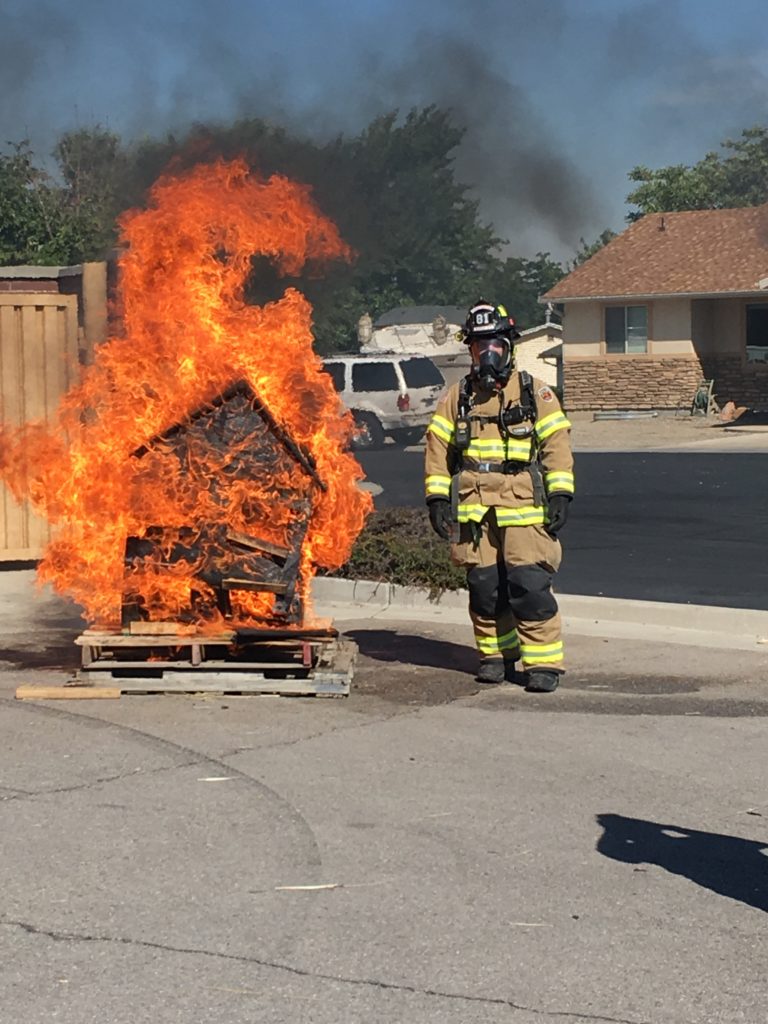
Utah Valley’s problem with air pollution was even worse this summer due to smoke from eight fires, according to the Utah Department of Environmental Quality.
Coming into the winter months, Donna Kemp Spangler of Utah Clean Air Partnership wrote in a blog post posted on Utah.gov that Utahns need to do their part to reduce emissions, prevent destructive wildfires and prepare for winter.
“Utah’s winter chill is creeping upon us, and with that comes the infamous inversions, that for perhaps 10 terrible days of the year have downright frightful and unhealthy air quality,” Kemp Spangler said.
The effect of bad air quality
The Environmental Quality’s Division of Air Quality monitors and records the federal ozone standard. The division also monitors for pollution. The smaller the particle of pollution, the bigger the health risk because the microscopic particles can get lodged in the lungs while breathing. Many of these smaller particles come from wildfires, according to the division’s website.
Division of Air Quality meteorologist Kristy Weber wrote in her blog that Utah County exceeded the federal standard of healthy air during the months of July and August due to smoke.
A few fires that affected Utah’s summer ozone were the Coal Hollow, Bald Mountain and the Pole Creek fires. These fires all ignited due to lightning and burned during August and September. Together, the fires burned a total of about 152,469 acres though these fires are now 100 percent contained, according to InciWeb.
When the three fires began burning, the ozone levels in Utah County continually increased into more harmful levels, according to the air quality trend charts on Utah Division of Air Quality’s website.
Wind shifts and temperature changes helped diminish the higher ozone levels, but Utah historical air monitoring data shows that Utah County has had 19 days of “red air” weather in 2018 compared to 15 red air weather days in 2017.
According to the Division of Air Quality, during red air weather days, children, older adults, those with lung diseases — such as asthma — and those who are active outdoors should reduce prolonged or heavy outdoor exertion.
Citizens who are not mindful of their outdoor activities during red air days may experience a more difficult time breathing and the air quality can be detrimental to respiratory functions. Even some BYU students noticed the difference in air quality this summer.
“Running outside is so much harder than it should be,” said BYU student Alicia Seeley during the Coal Hollow fire. “It’s so hard to breathe and my eyes burn.”
Firefighting efforts this summer
Firefighters were busy at work this summer digging fire lines, cutting fire-fueling vegetation and using thousands of gallons of water to put out fires around the state, according to CNN.
Chris Ownsbey, a Murray City firefighter, said he worked for 48 hours straight before heading home to his wife to take a short break, then headed back to fight the flames again.
“You spend two days living at the fire station and then you have four days off while the other two crews do that same shift,” Ownsbey said.
Firefighters sometimes leave their families for weeks at a time to help fight fires in other areas, according to Ownsbey. Although Ownsbey has not been directly involved in fighting fires outside of Utah, he said three firefighters from Murray were called to help fight the fires in California this summer.
“It’s a two-week deployment. They work for 24 hours straight — no sleep — and then they have some time off to rest and recuperate and then they go back at it,” Ownsbey said.
Earlier this year, Ownsbey was involved in fighting a fire that completely engulfed a house in Murray and a fire near Cottonwood High School where shrubs around the football field had burst into flames.
“You have to be ready to go if a call comes in and in your downtime you try to get a workout in and do some safety inspections,” Ownsbey said.
Ownsbey said finding time to work out is difficult sometimes, especially when calls constantly come in. Unfortunately, Ownsbey said, some firefighters get out of shape, making fighting fires more difficult.
Ownsbey said the amount of energy needed to fight fires is so intense some firefighters die from cardiac arrest.
What Utahns can do to fight poor air quality
While firefighters are fighting fires and the negative air quality that comes with it, there are simple ways Utah residents can help make Utah a better place to live and to breathe.
To make Utah’s air quality better this winter and throughout the wildfire season, Kemp wrote that Utahns are encouraged to carpool or take public transportation. For example, in Provo, the Bus Rapid Transit system provides free UVX buses to the public.
“The proposed route allows Bus Rapid Transit to travel the distance in five to 10 minutes less than can be traveled by car,” according to the Bus Rapid Transit website.
Kemp wrote that Utahns can also avoid the drive-thru at restaurants and commuting during rush hour.
The Utah Department of Environmental Quality encourages Utahns to fuel after dark or in cooler weather in order to cut down on the gasoline fumes that create ground-level ozone.
More information on promoting better air quality can be found on the Utah Department of Environmental Quality’s website.




